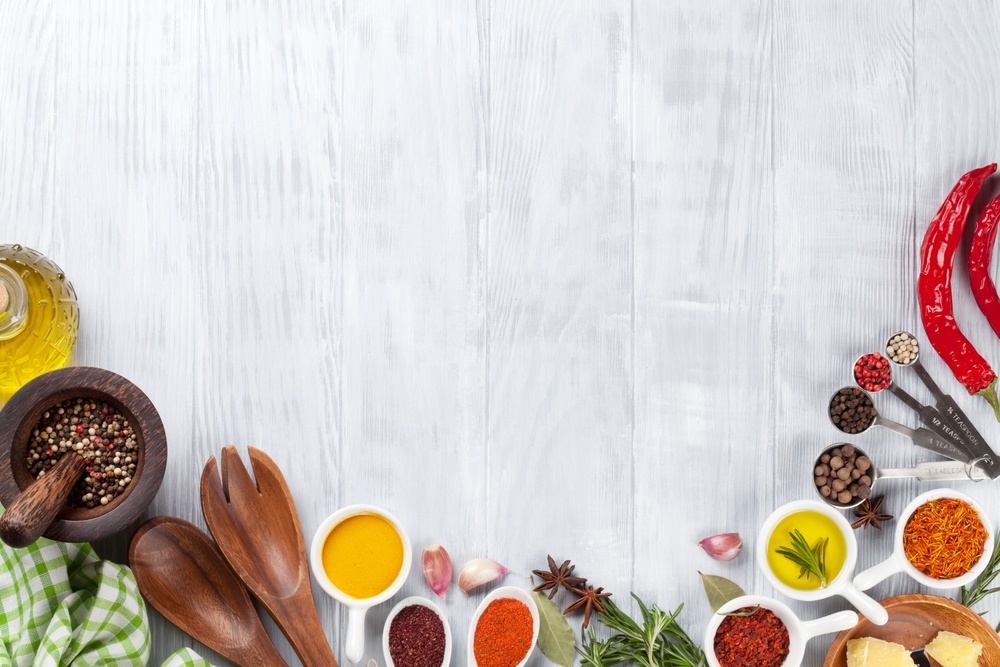More than 90% of Americans are eating far too much salt on a daily basis than recommended, according to the Center for Disease Control and Prevention, when they need low sodium cooking.
Many Americans have diets high in sodium with added salt leading to more and more cases of high blood pressure and heart disease.
But that’s because most people don’t realize how easy it can be to cook flavorful food that’s low in sodium.
Low sodium cooking is not difficult and can be even tastier than adding that extra salt to bring out the flavor in our favorite dish.
Substituting spices and herbs for salt can decrease your daily sodium intake and infuse different flavors for a delicious experience.
Low Sodium Cooking Ingredients and Recipes
Rosemary
Rosemary is inexpensive and perfect for savory dishes like chicken, beef, and baked or mashed potatoes.
This herb contains antioxidants which fight free radicals and decrease wrinkles and early aging.
This flavorful herb has also been shown to help with mental health and memory loss.
Because rosemary helps with memory and mental well-being, it also benefits your heart since healthy brain function is correlated with healthy heart function.
Try this rosemary recipe.
Skillet Rosemary Chicken
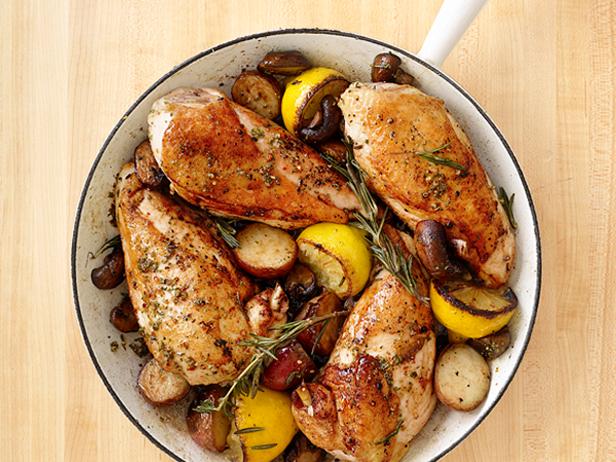
Ingredients
- 3/4 pound small red-skinned potatoes, halved, or quartered if large
- Kosher salt
- 2 sprigs fresh rosemary, plus 1 tablespoon leaves
- 1 clove garlic, smashed
- Pinch of red pepper flakes
- Juice of 2 lemons (squeezed halves reserved)
- 2 tablespoons extra-virgin olive oil
- 4 skin-on, bone-in chicken breasts (6 to 8 ounces each)
- 10 ounces cremini mushrooms, halved
Directions
- Preheat the oven to 450.
- Cover the potatoes with cold water in a saucepan and salt the water.
- Bring to a boil over medium-high heat and cook until tender, about 8 minutes; drain and set aside.
- Pile the rosemary leaves, garlic, 2 teaspoons salt and the red pepper flakes on a cutting board, then mince and mash into a paste using a large knife.
- Transfer the paste to a bowl.
- Stir in the juice of 1 lemon and the olive oil.
- Add the chicken and turn to coat.
- Heat a large cast-iron skillet over medium-high heat.
- Add the chicken, skin-side down, cover and cook until the skin browns, about 5 minutes.
- Turn the chicken; add the mushrooms and potatoes to the skillet and drizzle with the juice of the remaining lemon.
- Add the rosemary sprigs and the squeezed lemon halves to the skillet; transfer to the oven and roast, uncovered until the chicken is cooked through and the skin is crisp, 20 to 25 minutes.
Garlic
Though it may be harsh on the breath, it is very favorable to your cardiovascular health.
Garlic helps to lower LDL (bad cholesterol) and triglycerides, both of which can lead to heart disease.
Like rosemary, garlic contains antioxidants which protect your immune system and keep you looking and feeling healthy.
Additionally, garlic has been shown to help lower blood pressure as much as certain medications after 3-6 months of use.
Garlic Beef, Broccoli, and Cauliflower Stir Fry
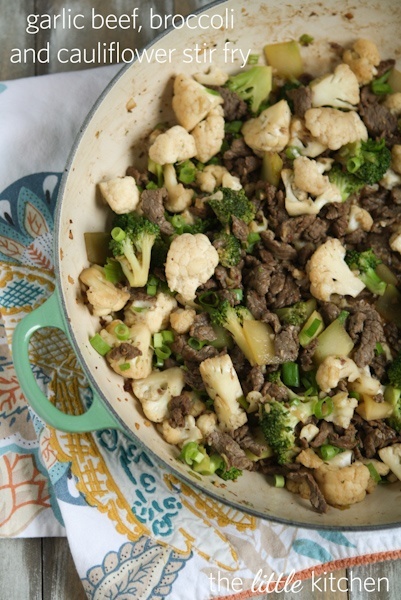
Ingredients:
- 3 cups uncooked rice
- 7 garlic cloves, minced and divided in half
- 1 tsp sesame oil
- 3 1/2 Tbsp oyster sauce
- 1 lb beef sirloin filet, sliced thin across the grain
- salt and pepper
- 4 green onions, chopped, whites & green separated
- 1 Tbsp vegetable oil
- 2 bundles of broccoli, chopped about 2-3 cups
- 1 head cauliflower, chopped about 2 cups
Directions:
- Rinse and cook rice in your rice cooker according to manufacturer’s instructions.
- Marinate beef in 1 tsp sesame oil, half of the garlic & 1 1/2 Tbsp oyster sauce. Add salt and pepper.
- Take a small bowl and add the rest of the garlic, white part of the green onions and 1/2 Tbsp oil. Mix and set aside.
- Add 1/2 Tbsp oil to a large skillet or wok (I used a cast iron braiser) and turn heat to medium-high.
- Also add marinated beef and cook for 5-8 minutes, until browned. Remove beef and place onto a plate.
- Add 3/4 cup water to the skillet and reduce heat to medium heat.
- Add broccoli & cauliflower and cover.
- Cook for about 5 minutes. Don’t overcook the vegetables.
- Remove the vegetables and drain the water.
- Wipe the skillet with a clean paper towel if needed.
- Return beef to the skillet and leaving room in the middle, add the garlic-green onion-oil mixture.
- Cook for 30-60 seconds and smash the garlic with the back of a wooden spoon.
- Incorporate the garlic mixture into the beef.
- Add back the broccoli and cauliflower.
- Add 1/2 tsp sesame oil & 2 Tbsp oyster sauce and mix together until heated through.
- Season with salt and pepper.
- Garnish with remaining green onions and serve with rice.
Onion
A very popular essential for low sodium cooking, onions add flavor without needing a lot to a recipe.
Onions can help to lower blood pressure by preventing clots in blood vessels.
Onions are also rich in blood pressure lowering agent called quercetin.
It is especially effective for those whose high blood pressure is caused by too much sodium consumption.
Eat onions raw or lightly cooked so that the quercetin does not cook out.
Also, try using whole onions rather than an onion salt or powder, which may add too much salt to your cooking.
Fava Bean Bruschetta With Chicory And Red Onion
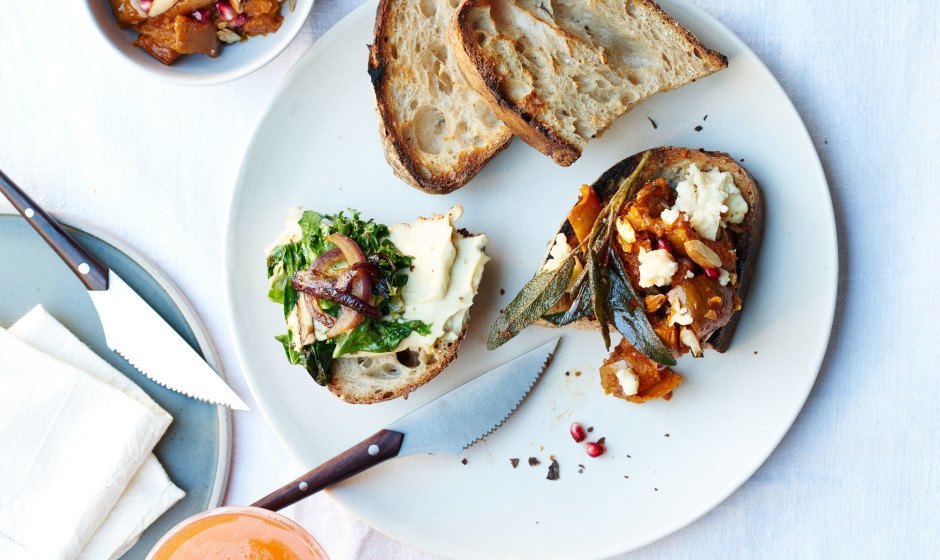
The bean purée may thicken when chilled. Loosen it back up with a splash or two of water or stock.
Ingredients
- 4 tablespoons (or more) olive oil, divided, plus more for drizzling
- ½ medium yellow onion, thinly sliced
- 2 garlic cloves, smashed
- ½ teaspoon chopped rosemary
- ¼ teaspoon crushed red pepper flakes
- ½ cup dried skinless fava beans
- Kosher salt
- 1 tablespoon fresh lemon juice, plus more
- 1 small red onion, thinly sliced
- 2 cups torn chicory (such as radicchio, curly endive, and/or Belgian endive)
- 4 slices country-style bread, toasted
- Aleppo-style pepper or crushed red pepper flakes (for serving)
Preparation
- Heat 2 Tbsp. oil in a small pot over medium.
- Cook yellow onion, stirring occasionally, until soft and golden, 10–12 minutes.
- Add garlic, rosemary, and red pepper flakes and cook, stirring, until fragrant and garlic is soft, about 3 minutes.
- Add fava beans and pour in cold water to cover by 2″. Bring to a boil.
- Reduce heat to medium-low, season with salt, and simmer until tender, 45–60 minutes.
- Let cool slightly. Drain, reserving 1 cup cooking liquid.
- Purée fava beans in a blender with ¼ cup reserved cooking liquid and 1 Tbsp. lemon juice, adding more cooking liquid as needed, until smooth.
- Taste and adjust seasoning with more salt, oil, and lemon juice as needed.
- Heat 1 Tbsp. oil in a medium skillet over medium-high.
- Add red onion, season with salt, and cook stirring often, until brown but not soft, about 5 minutes. Transfer to a plate.
- Wipe skillet clean and heat 1 Tbsp. oil over medium-high.
- Add chicory, season with salt, and cook, tossing, until wilted slightly, about 3 minutes.
- Spoon fava bean purée onto toast; top with red onion, chicory, and Aleppo-style pepper.
- Drizzle with oil.
Dill
A great ingredient to turn to for low sodium cooking is dill.
Simple, easy to cook with, and full of flavor and health benefits, dill can be added to fish, chicken, or veggies to enhance flavor.
Dill is full of vitamin c and antioxidants that keep your body ready to fight off free radicals.
It also lowers LDL and triglycerides while increasing the amount of HDL in your bloodstream.
Dill acts as an anti-inflammatory that can reduce arthritis pain as well as inflammation that may cause high blood pressure.
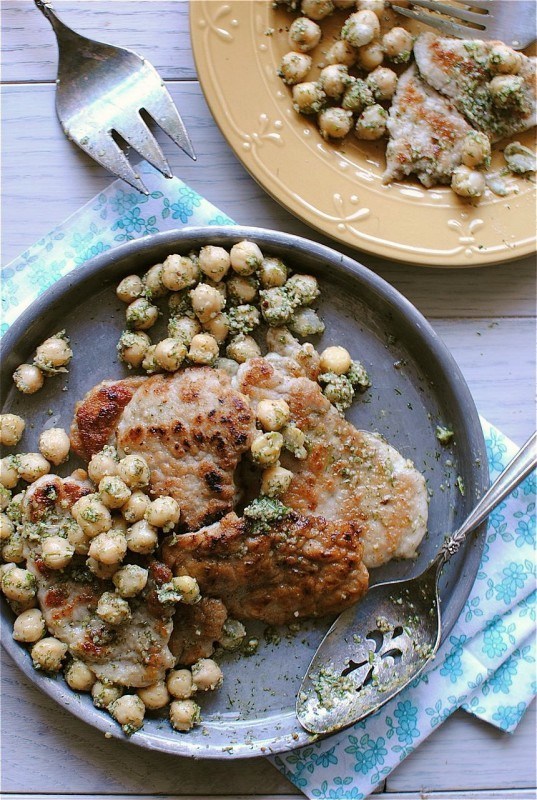
Pork Scallopini with Dill Pesto and Chickpeas:
- 1 large clove garlic
- 1/4 cup freshly ground parmesan cheese
- 1/4 cup lightly toasted pecans
- 0.8 oz package fresh dill weed
- 1/4 cup extra-virgin olive oil (maybe a little more)
- 2 Tbs. extra-virgin olive oil (for the pork)
- 1 (14.5 oz) can chickpeas, drained and rinsed
- 1/2 cup all-purpose flour
- 1 pound pork tenderloin, trimmed of any excess fat
- coarse salt and freshly ground pepper
- In a small food processor, combine the dill weed (save a little for garnish!), garlic, cheese, pecans, olive oil and a pinch of salt and pepper.
- Blitz until smooth and wonderful. Taste it. Did you ever know such a taste could exist?
- Dump the chickpeas into a bowl and stir the pesto into it.
- Take your pork and slice it into 1-inch pieces.
- Then place the slices between two sheets of plastic wrap and pound them out thinly. That felt good, didn’t it?
- In a shallow dish, combine the flour with another good pinch of salt and pepper.
- Dredge the thin pork slices through the flour, shaking off any excess.
- Heat the oil in a large skillet.
- Place as many pork slices as you can in the pan and sear on both sides until browned and cooked through, about 2 minutes per side.
- Continue with the rest of the pork (adding more oil to the pan if needed) until all of it is cooked.
Resources
http://www.foodnetwork.com/recipes/food-network-kitchens/skillet-rosemary-chicken-recipe.html
http://www.thelittlekitchen.net/garlic-beef-broccoli-cauliflower-stir-fry/
http://www.bonappetit.com/recipe/fava-bean-bruschetta-with-chicory-and-red-onion
http://bevcooks.com/2012/08/pork-scallopini-with-dill-pesto-and-chickpeas/

